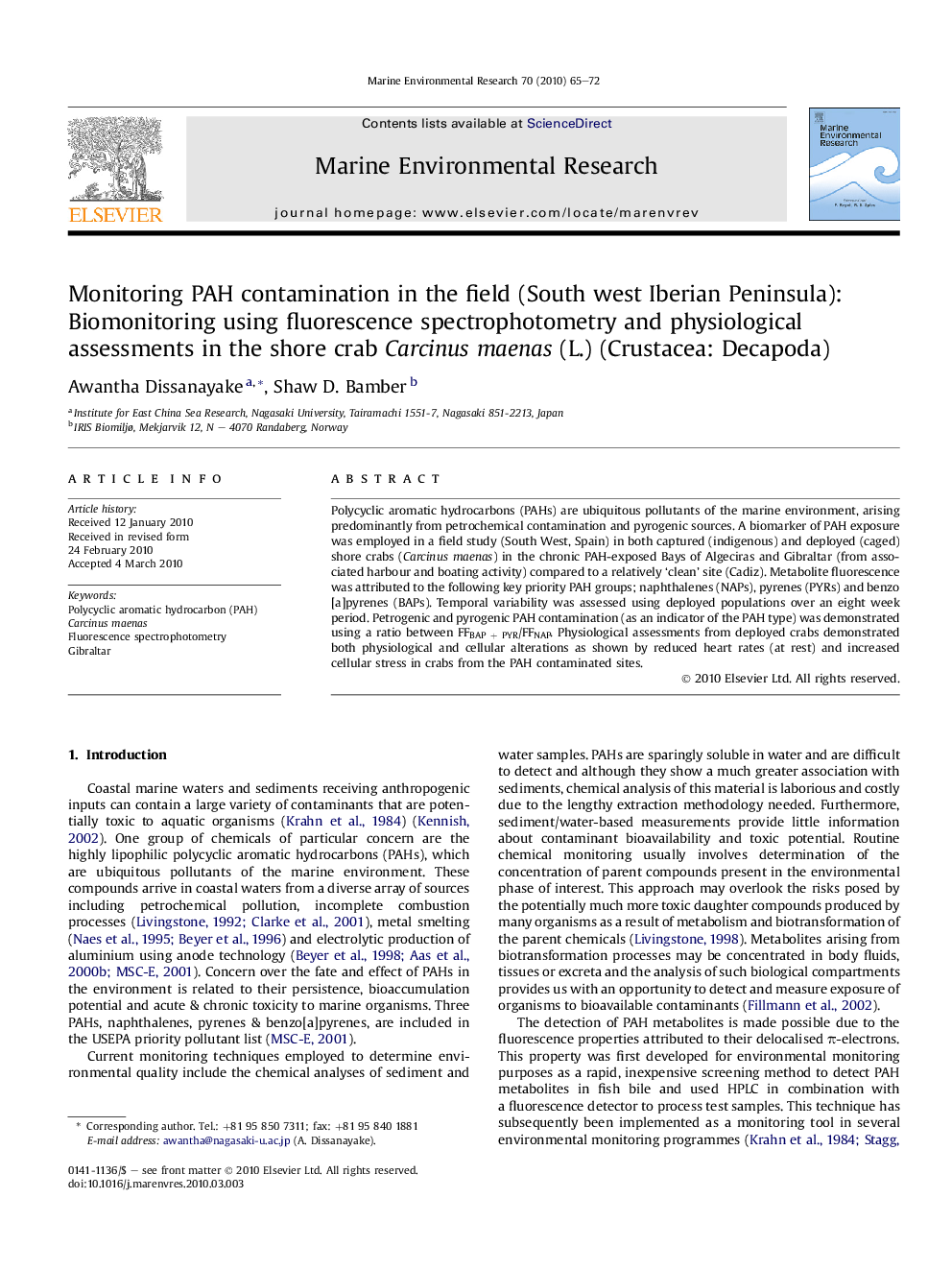| Article ID | Journal | Published Year | Pages | File Type |
|---|---|---|---|---|
| 4551278 | Marine Environmental Research | 2010 | 8 Pages |
Polycyclic aromatic hydrocarbons (PAHs) are ubiquitous pollutants of the marine environment, arising predominantly from petrochemical contamination and pyrogenic sources. A biomarker of PAH exposure was employed in a field study (South West, Spain) in both captured (indigenous) and deployed (caged) shore crabs (Carcinus maenas) in the chronic PAH-exposed Bays of Algeciras and Gibraltar (from associated harbour and boating activity) compared to a relatively ‘clean’ site (Cadiz). Metabolite fluorescence was attributed to the following key priority PAH groups; naphthalenes (NAPs), pyrenes (PYRs) and benzo[a]pyrenes (BAPs). Temporal variability was assessed using deployed populations over an eight week period. Petrogenic and pyrogenic PAH contamination (as an indicator of the PAH type) was demonstrated using a ratio between FFBAP + PYR/FFNAP. Physiological assessments from deployed crabs demonstrated both physiological and cellular alterations as shown by reduced heart rates (at rest) and increased cellular stress in crabs from the PAH contaminated sites.
